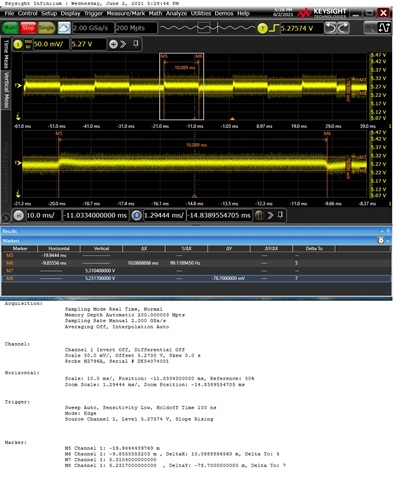For tps53355, we test the dynamic response of the chip, and the voltage deviation is less than 5%. The test results are shown in the figure below. Please help to judge whether this power supply is abnormal?
The electronic load setting parameters are as follows:
Low value: 2A
High value: 15A
The rising slope is 2.5a/us
The descending slope is 5 A / us
Low position timing: 10ms
High position timing: 10ms


